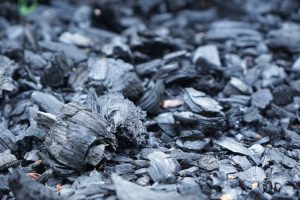Short answer
The decomposition time of leather varies depending on various factors such as the environment, temperature, and humidity. However, under normal conditions, it can take approximately 25 to 50 years for leather to decompose.
More
Leather is a durable and versatile material that undergoes a complex process called decomposition when exposed to certain environmental conditions. The decomposition of leather occurs naturally over time as a result of several factors, including biological activity, moisture, temperature, and the presence of microorganisms. This process can be somewhat accelerated in specific circumstances, leading to the breakdown of the leather's fibers and gradual deterioration of its physical properties.
Biological activity and moisture play crucial roles in the decomposition of leather. When leather comes into contact with moisture, such as excessive humidity or liquids, it becomes more prone to microbial growth. Microorganisms, such as bacteria and fungi, colonize leather and feed on its organic components, including proteins and collagen fibers. As they consume and metabolize these organic substances, they contribute to the breakdown of the leather, causing it to lose its strength and durability.
Temperature also affects the decomposition of leather, although its impact may be indirect. Extreme temperatures, both hot and cold, can accelerate the aging process of leather by increasing the rate of chemical reactions and microbial activity. High temperatures can promote the growth and activity of microorganisms, while extremely low temperatures can cause the leather to become brittle and more susceptible to damage. Additionally, rapid fluctuations in temperature can lead to the expansion and contraction of the leather, causing stress on its structure and potentially accelerating its decomposition.
Overall, the decomposition of leather is a natural process driven by various factors. Exposure to moisture, biological activity, temperature fluctuations, and the presence of microorganisms all contribute to the breakdown of leather fibers and the loss of its desirable properties over time. Therefore, proper care and maintenance of leather products, including regular cleaning, conditioning, and protection from extreme environmental conditions, can help slow down the process of decomposition and extend the lifespan of leather goods.
Is it possible to recycle leather?
Intresting facts
- Leather is made from the skin of animals, primarily cows. When leather is exposed to decomposition, it undergoes a natural process called putrefaction.
- Putrefaction occurs when bacteria and other microorganisms break down the proteins in the leather, resulting in the release of foul-smelling gases such as hydrogen sulfide and ammonia.
- One of the factors that affects the decomposition of leather is humidity. High levels of humidity can create a suitable environment for bacteria to thrive, accelerating the decomposition process.
- In drier conditions, leather can become desiccated and shrink. This can make the leather brittle and prone to cracking, ultimately leading to its decomposition.
- Leather decay can be slowed down by treating it with preservation methods such as tanning or applying specific chemicals. These methods help prevent or delay the growth of bacteria and fungi, thus preserving the integrity of the leather for longer periods.
Summary and final thoughts
The decomposition time of leather varies depending on the specific conditions it is exposed to. In general, leather takes a significant amount of time to decompose, ranging from decades to even centuries. The natural properties of leather that make it durable, such as its fibrous structure and resistance to decay, contribute to its slow decomposition. However, various external factors such as temperature, humidity, and exposure to microorganisms can accelerate or hinder the decomposition process. Hence, while leather is not biodegradable in the conventional sense, it eventually breaks down over a long period of time. Ultimately, the decomposition of leather is a complex and gradual process influenced by a multitude of environmental factors.




